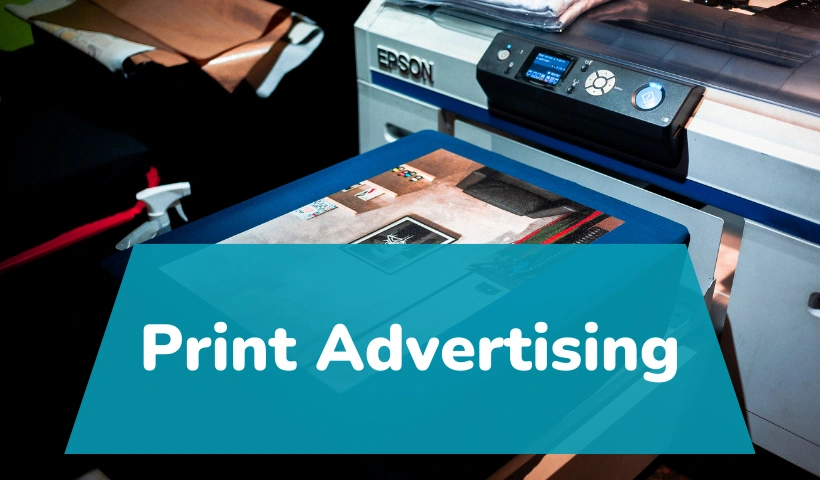Print advertising has long been a cornerstone of marketing, offering businesses a tangible and trusted way to reach their audiences. From magazines and newspapers to flyers, catalogues, and posters, print creates a lasting impression that digital ads sometimes struggle to achieve. Yet in today’s digital-first world, traditional print advertising can feel limited if it does not connect with the online journey.
This is where QR codes provide an elegant solution. By embedding a scannable code within a print design, businesses can seamlessly bridge the offline and online worlds. With just a quick scan, readers are transported from a static advertisement to an interactive digital experience—turning curiosity into measurable engagement.
Here’s how to use QR codes effectively in print advertising to maximise impact and drive results.
1. Connect Print to Digital Content
One of the simplest yet most powerful applications of QR codes in print is linking to digital content. A code on a magazine advert can take readers directly to a product video, a blog article, or a brand’s social media page. This transforms an otherwise static advert into a dynamic gateway, offering customers richer and more interactive content.
The advantage lies in immediacy. Instead of expecting audiences to remember a website URL or search manually, QR codes provide instant access. This reduces friction, encourages engagement, and ensures the message stays fresh in the customer’s mind.
2. Drive Traffic to Special Offers and Promotions
Print advertising is often used to promote sales or limited-time offers. By embedding a QR code that links directly to a promotion page, voucher, or discount code, businesses can encourage immediate action. Readers are far more likely to scan a code on the spot than to type in a web address later.
This approach also creates a sense of exclusivity. If the QR code unlocks a discount available only through that particular advert, readers feel rewarded for engaging. This not only drives conversions but also strengthens brand loyalty by creating a positive customer experience.
3. Simplify Purchases and Conversions
One of the limitations of print is that it traditionally stops at awareness—it informs but does not always convert. QR codes solve this by enabling readers to move directly from an advert to a purchase page. Whether it’s booking tickets, reserving a table, or buying a featured product, the path to purchase becomes faster and more seamless.
This streamlined customer journey helps reduce drop-off and transforms print from a purely brand-building channel into one that also supports measurable sales. For businesses looking to demonstrate ROI on print campaigns, this can be particularly powerful.
4. Enhance Tracking and Measurement
One of the biggest challenges of print advertising has always been measuring effectiveness. Unlike digital ads, it is difficult to know how many people actually engaged with a printed campaign. Dynamic QR codes address this by providing detailed analytics, such as the number of scans, user location, and device type.
These insights give marketers a clearer picture of how their print campaigns are performing, allowing them to optimise future efforts. For example, businesses can test different placements, designs, or call-to-actions to see which generates the most engagement—turning what was once an unmeasurable medium into a data-driven one.
5. Create Interactive Customer Experiences
Beyond driving traffic and conversions, QR codes can be used to create memorable customer experiences. A code on a poster might launch an augmented reality feature, while one on a catalogue could provide styling ideas or recipe inspiration. By combining creativity with technology, businesses can transform their print materials into interactive tools that spark curiosity and delight.
This not only differentiates a brand from competitors but also makes the advertising more memorable. When readers enjoy the interaction, they are more likely to share it with others, extending the reach of the campaign organically.
6. Integrate with Loyalty Programmes and CRM
QR codes in print can also serve as a bridge to long-term customer relationships. For instance, they can link directly to loyalty programme sign-ups, app downloads, or personalised landing pages. This allows businesses to capture customer data and continue engagement well beyond the initial advert.
By integrating QR scans with a CRM system, marketers can track individual journeys from offline touchpoints to online behaviour, enabling more targeted follow-up campaigns. This creates a closed loop between print advertising and digital marketing, ensuring every pound spent works harder.
Best Practices for Using QR Codes in Print
- Prioritise visibility: Place the code in a prominent position and ensure it is large enough to be scanned easily.
- Add a clear call-to-action: Tell readers what they will gain by scanning (e.g. Scan to watch the demo).
- Test before publishing: Always check the code works across devices before printing.
- Keep the design clean: Avoid overcrowding the advert and ensure there is enough white space around the code.
- Use dynamic codes where possible: These allow for editing links later and provide valuable tracking data.
Final Thoughts
QR codes breathe new life into print advertising by connecting static materials to dynamic, measurable digital experiences. They simplify customer journeys, enable tracking, and open the door to interactive engagement—all while preserving the trust and tangibility that print offers.
For businesses looking to maximise the impact of their print campaigns, Brevix provides the tools to create, customise, and track QR codes with ease. With Brevix, every scan becomes an opportunity to connect with your audience and drive measurable results.


